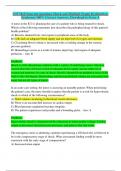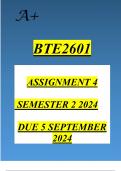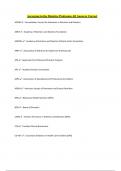Exam (elaborations)
ATI Med Surg test questions Shock and Multiple Organ Dysfunction Syndrome 100% Correct Answers, Download to Score A
- Course
- Institution
ATI Med Surg test questions Shock and Multiple Organ Dysfunction Syndrome 100% Correct Answers, Download to Score A A nurse in the ICU is planning the care of a patient who is being treated for shock. Which of the following statements best describes the pathophysiology of this patient's health ...
[Show more]





